Jonathan Davies and Anna Meyer review the Venice Architecture Biennale
The Venice Architecture Biennale is the world’s most important celebration of contemporary architecture. With his Common Ground theme, this year’s director David Chipperfield has set a tone of collaboration and openness. ‘I am interested in the things architects share in common’ he comments, ‘from the conditions of the practice of architecture, to the influences, collaborations, histories and affinities that frame and contextualise our work.’
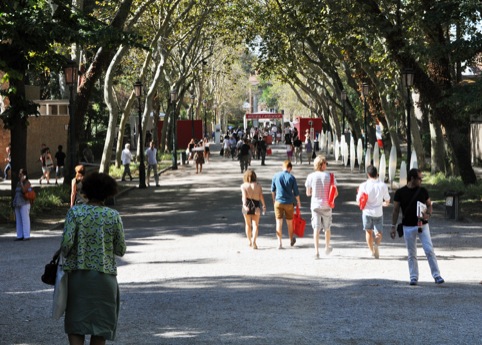
The Venice Architecture Biennale is the world’s most important celebration of contemporary architecture. With his Common Ground theme, this year’s director David Chipperfield has set a tone of collaboration and openness. ‘I am interested in the things architects share in common’ he comments, ‘from the conditions of the practice of architecture, to the influences, collaborations, histories and affinities that frame and contextualise our work.’
The expansive theme has drawn thoughtful, inspirational and at times provocative responses from the numerous architects invited to exhibit. Amidst the profusion of creativity it is far easier to perceive contrasts between the practitioners and their exhibits than commonalities. But with repeat viewings, it becomes increasingly apparent that the exhibition makes a profound statement about the ground that architects share. The common ground is not in the process of creating architecture. Rather, it is to be found in the exhibitors’ understanding of the ultimate aim of architecture: the provision of structures and spaces for people and the communities they belong to.
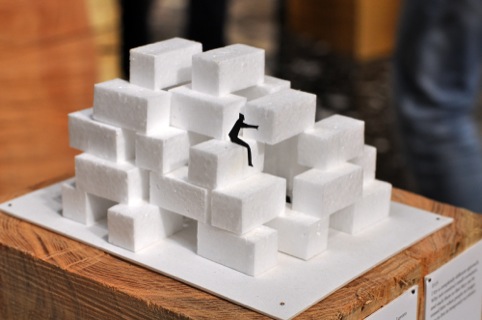
The Japanese Pavilion is an uplifting example of architects aiming to serve local communities. Toyo Ito’s installation proposes alternative housing solutions for those whose homes were destroyed by the earthquake and tsunami in 2011. Juxtaposed against haunting images of the devastated countryside, brilliant-white housing models seem almost to glow as beacons of new life for Japan’s dispossessed citizens. Empathetic and energizing in equal measure, the installation deservedly won the Golden Lion for Best National Participation.
Under Chipperfield’s direction it is unsurprising to see a strong British presence. Zaha Hadid, Norman Foster and Caruso St John exhibited with varying degrees of flair and imagination. None, though, engaged with the exhibition’s theme with quite as much verve as London-based FAT. Its Museum of Copying installation explores the idea of architectural copying as an important, unavoidable and positive phenomenon.
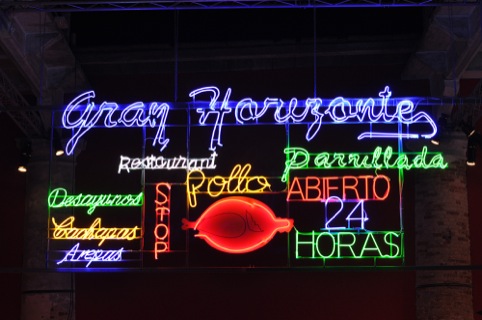
Over at the British pavilion, the British Council’s Venice Take Away installation presents the work of 10 teams who traveled the world in search of imaginative responses to the Biennale’s theme. The exhibit Open Charter is notable for the way it seeks to engage visitors in a dialogue about the architecture profession by posing the question: ‘what is the role of the architect today?’ Evoking Gillian Wearing’s conceptual photography, the exhibit comprises images of industry professionals and their written responses to the question. Visitors are invited to contribute their own answers, to be added to the display later, using an iPad and pens. Simple, yet clever, the exhibit prompts visitors to explore the role of the architect in society as a catalyst for positive change. The project is ongoing and can be viewed here.
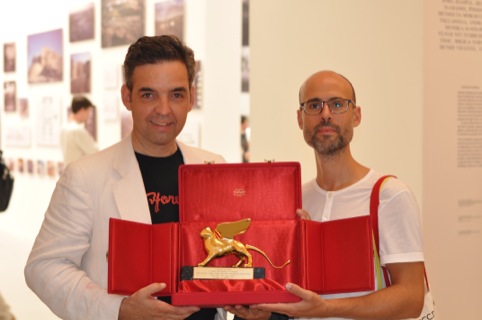
The highlight at the Arsenale site is undoubtedly the Torre David / Gran Horizonte exhibition by Urban Think Tank, Iwan Baan and Justin McGuirk. The project documents the Torre David ‘vertical community’ in Caracas. Originally planned as a corporate tower, the unfinished 45-storey concrete frame is now inhabited by a community who would otherwise live in the city’s slums. In the spirit of the Biennale’s theme, the installation takes the form of a Venezuelan Arepa restaurant, creating a genuinely social space for discussion rather than a didactic exhibition space. Commended for its vision and presentation, the installation won the Golden Lion for Best Project at the Biennale.
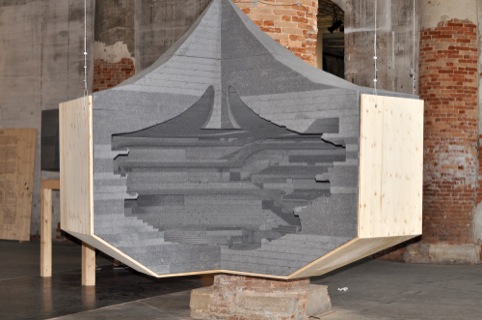
Also at the Arsenale, Herzog & de Meuron’s provocative display highlights the often-exasperating realities of the profession. Since their dazzling design for the Hamburg Elbphilarmonie first aired in 2003, ever-escalating build costs and divergent stakeholder interests have beleaguered the project, culminating in a temporary halt to the building work in 2011. Their large-scale models hang lifelessly among uncensored press reports damning the development. The exhibit reads as a cautionary tale of a project that almost failed because the architects, politicians, and financiers could not find common ground and lost sight of the original goal of creating a vibrant cultural centrepiece for the benefit of Hamburg’s citizens.
The Biennale is a unique insight into what is happening in the architecture profession around the world at this moment in time. The underlying message this year seems to be that as the world faces continuing economic and environmental crises, architects must strive to uphold the relevancy of architecture as a force for positive change. Both for the good of those who practice it, and for the good of the communities that need new structures and spaces.
Jonathan Davies and Anna Meyer are co-founders of Autumn Communications. You can find them on Twittter at @annac_meyer and @jonathan_tweets
-
Post a comment




